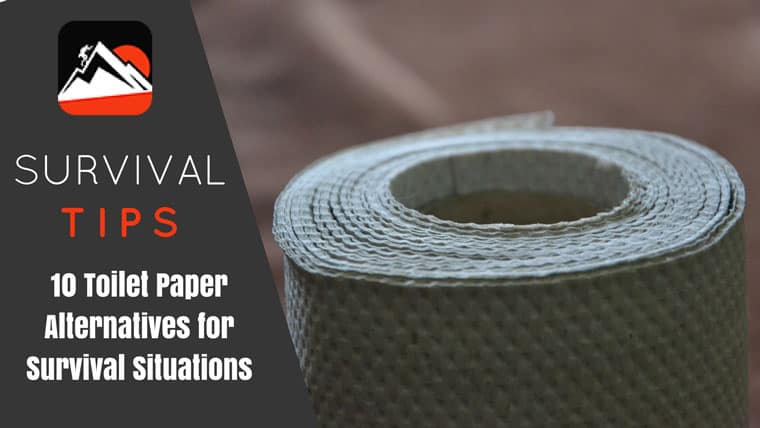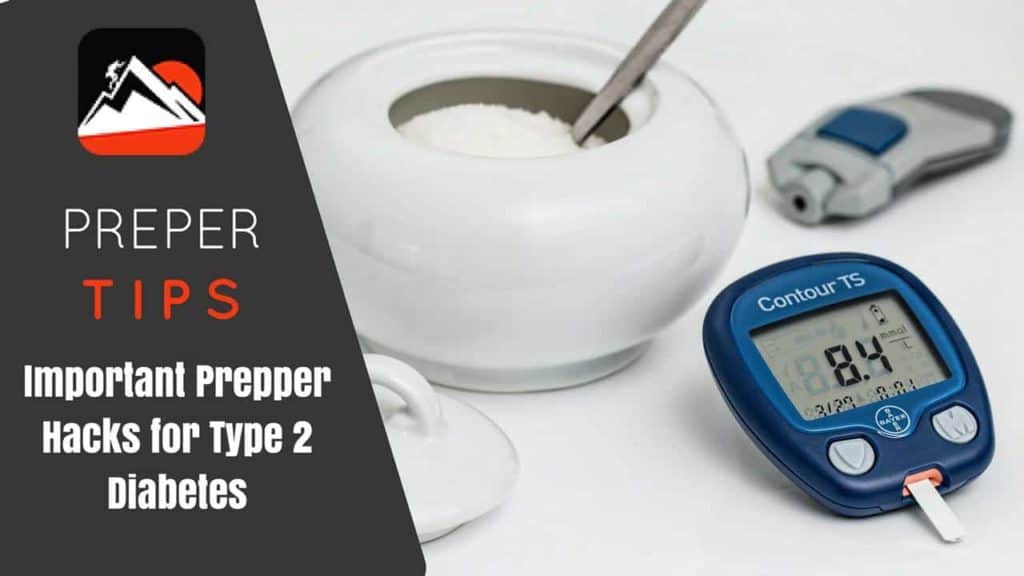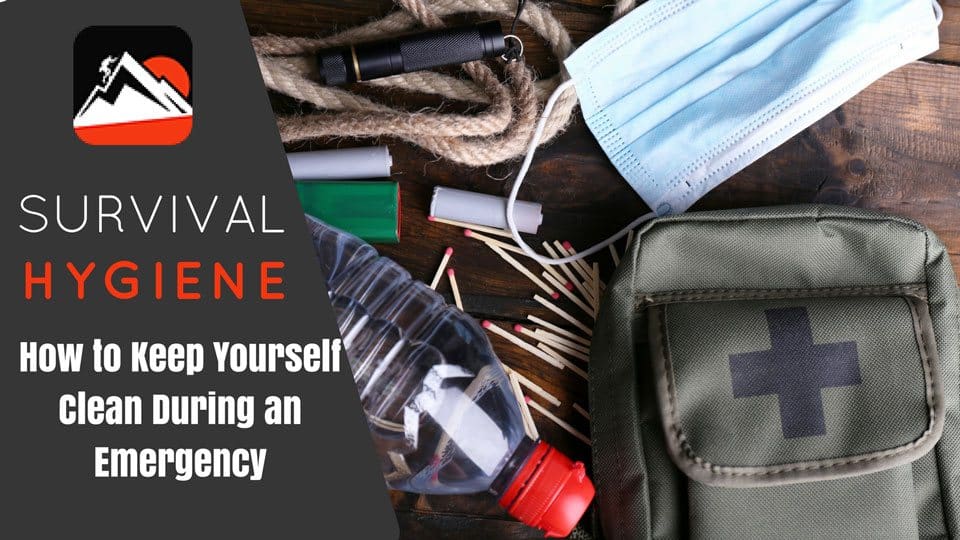Contents
When out in the wilds, there are plenty of dangerous that are clear and present to worry about, but often one of the most dangerous risks is hygiene. This is because when exposed to the stresses of survival, we often have a tendency to push hygiene down on the priority list. Of course, you can only do that so long and for so many things before that in and of itself becomes too much of a risk. One issue that can be a bit embarrassing and potentially upsetting, but nevertheless needs to be addressed is what to do about using the restroom–specifically, once you have finished. If society breaks down, you will not be able to simply drop down to the grocery store to pick some up. That is why we have put together a list of the best 10 toilet paper alternatives for survival situations.
[embedyt] https://www.youtube.com/watch?v=LJ80qFQ7hhs[/embedyt]
1. Compressed Tissues
This can be considered a bit of a luxury, but when it comes right down to it, there truly is no better substitute for toilet paper largely because it was designed primarily to be a toilet paper substitute in a survival situation. That said, this type of gear is likely worth whatever minor weight and space requirements that it otherwise occupies due to the versatility and relative efficiency with which it performs its task. Essentially, a fabric cloth is compressed down to the size of a large multivitamin sized pill that then expands in literal seconds when exposed to water.
This design is clearly intended for survival and efficiency purposes, though it does carry a few warnings. For instance, you will obviously need to make sure that the tablets are protected from the elements and have zero chance of being prematurely exposed to water lest they expand too soon. Either way, the end result is a thin, fabric cloth that is still surprisingly strong given its size that can not only serve as a substitute for toilet paper but can be used as a cloth in general–essentially providing you with a reusable cloth for a time. Just do not expect this to outlast a traditionally woven fabric cloth–which just so happens to also be another great substitute for toilet paper.
You might also find interesting our article about hygiene during survival situations.
2. Fabric
This one seems almost a bit too obvious, but it does not come without plenty of caveats to present a more difficult decision. Specifically, fabric has so many advantages that it might seem easier and more effective simply to opt for a fabric alternative, but as we will see, only those in the best and most ideal situations should consider this method. Essentially, fabric has one main advantage over a number of alternatives in that it is reusable, meaning that few resources which are also lightweight and easy to pack could potentially remove the need for any other consideration in regards to restroom hygiene.

The problem comes from the fact that unless you are literally using the fabric directly next to an isolated but consistently full water source, you will then be required to carry the soiled fabric with you. As such, the use of fabric should likely be your first choice assuming you have made it to your bug out location which itself has access to an abundance of freshwater. Keep in mind, not cleaning soiled fabric quickly enough presents its own pathogenic risk, making it worse than going without altogether depending on the situation. The fact that you often need far less fabric than paper is simply another in a long list of benefits that also includes an increased absorbancy ratio and likely the most comfortable experience.
3. Mullein & Other
For those of you who are not yet survival enthusiasts, mullein is arguably the survivalist’s best friend and easily one of the most useful plants to have access to. Outside of the benefits it offers our particular scenario, mullein can also be used to treat numerous other ailments–meaning that unless you have an abundance of the plant, you might be better off saving it for some of its other uses. That said, not all parts of the mullein plant can accomplish the same things, and for an alternative to toilet paper, we are most interested in the leaves of the plants–though it should be noted the leaves can also be used as a gauze substitute which once again might make them too valuable to use for this purpose.
Regardless, when used as an alternative to toilet paper, the little fibrous hairs that grow along the top surface of the leaf perform a couple important functions for our purposes. First, they present one of the softest surfaces that are likely softer than anything you would rather use that is manufactured. Second, the fibers make sure that you are left especially clean while also cleaning you with antibacterial properties–though these are superficial and short-lived. Of course, not every region is conducive to the cultivation of mullein, in which case you will want to look for a large, broadleaf that is also thick, taking special care to note the poisonous plants of the region prior.
4. Sponge
This could be seen as an alternative to fabric, and it definitely presents similarly, except this method actual serves even better when used in a stationary situation, meaning once you and your party have already reached your bug out location. Technically, sponges can work just as well even on the road, but make sure they are properly cleaned and disinfected can be a bit more difficult. That said, when used in a more stable setting, it can be especially effective and, most importantly, efficient.
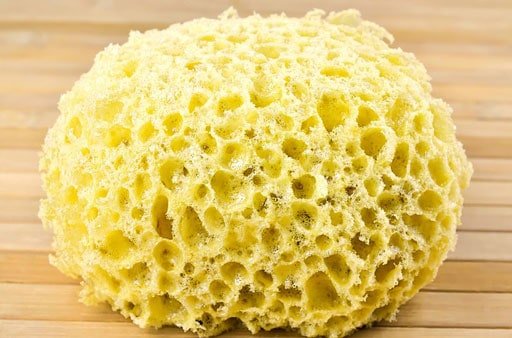
As used in the ancient Roman era, sponges provide the ability to quickly and easily be used mostly dry or wet and clean significantly easier than fabric–for these purposes anyway. Placing a sponge at the end of a pole and leaving it in a bucket of water was the norm for ancient Romans. Granted, you would want to make sure you were more hygienic than that, but the principle would otherwise be pretty much the same. Of course, this also means that sponges will have some of the same limitations as fabric, most notably that you need an abundance of water for this to be an effective alternative. Of course, if you do have the excess water or it is not potable, then sponges are arguably a better alternative to toilet paper than even fabric.
5. Stone
This one is certain to turn a few heads, but the use of a stone as an alternative to toilet paper is not only effective but a long-practiced method that humans have used longer than we even know. That said, it should be made explicitly clear that we are not suggesting that you go out and grab some random stone from the ground. The stones that have been used throughout history and the stone you should use would be ovular in shape but flat. On top of that, all the edges would need to be polished out and the surface would need to be smoothed in general. It should be noted that this was actually a common practice for areas where water is scarce.
One of the best things about using a stone is that not only is it reusable, but it is also one of the easiest reusable alternatives to toilet paper to clean. In fact, using a polished stone is arguably the best travel alternative to toilet paper simply because it is incredibly efficient from use to maintenance. That said, the absolute effectiveness of this method can be a bit questionable, and it will not be able to get you quite as clean as many of the other alternatives on this list–though it is not much different than toilet paper in this regard, which itself is only okay at its task.
6. Paper
Despite this likely being any untrained individual’s first assumption, most paper is not actually that effective as a substitute to toilet paper–especially when you consider that, though they may require a bit of additional effort and knowledge, most of the other alternatives on this list are technically more effective than toilet paper at its own intended task. That said, another potential problem for paper is the fact that you are unlikely to find much of it in an ideal survival setting–specifically, your bug out location. As such, the use of paper, in general, is likely to be restricted to urban settings which is more than an acceptable place to use this alternative and potentially stretch out your supplies that little bit more by making this a first option in its proper setting.

That said, outside of an urban survival scenario–from which your first job should be meeting up with your party and leaving said setting–paper is an alternative you use before anything else of value but after any ready-made alternative. As such, it is a bit of the middle child of options, but to be fair, paper is actually not that effective either. Basically, paper is not that absorbance of a material, and toilet paper is only such because of how thin it is. As such, other types of paper are likely to be far less effective than pretty much any other alternative we covered.
7. Water
At first blush, this may seem like a fairly obvious solution that should easily be much higher on our list considering all of the positive benefits that it provides–technically, it is the ideal way alternative to toilet paper and is in fact significantly more effective than toilet paper at the same task. Considering the heaps of praise, you may wonder why this suggestion is then saved more for the “emergency” portion of the list. Basically, water is such a valuable resource that also requires a certain degree of care that it should only be used for this purpose if the water is not potable or is so plentiful that it is unlikely to ever matter.
That said, if you have a fair amount of non-potable water, like near the ocean, for example, this can be a great alternative. Of course, if you have a great deal of freshwater, for instance, if your bug out location is next to a runoff river, it is still a great alternative. The biggest benefit is that it ensures you are as clean as you can otherwise get absent soap or something similar. Of course, as the examples suggest, this is generally an alternative best suited for a party that has already reached its bug out location which just so happens to have this resource nearby.
8. Dirt
Depending on how astute a student of human history you are, you may already be fairly familiar with this method as it is included in some desert survival tactics. Essentially, dirt serves as a coarse exfoliant that will, while certainly not the most comfortable option, is still surprisingly effective. That said, there are definitely some restrictions to this option as the finer grained the dirt the better, with sand obviously being the best. Another quality to keep in mind is the dampness of the dirt as moist dirt will not work properly.

Regardless, one of the more efficient survival tactics is to dig a hole and then use the dirt from the hole–keeping in mind that this is almost certainly a hot and arid setting. That said, there are plenty of biomes around the world for which this would be effective, though it is likely saved as a final option and is most likely to be deployed during a catastrophic collapse from which there is no return. Of course, that is kind of the point of prepping in the first place, and if the need arises where survival tactics must be employed for years on end and some of the other natural resources are not available or in plentiful enough supply to sustain, this is always an effective, if unpleasant, method that can sustain indefinitely.
9. Hand
We told you that this list was not for the squeamish or faint of heart as survival often requires you to do things that would otherwise be considered taboo in polite society. That said, when you are faced with the choice between risking the development of some sort of inflammation or infection which could otherwise impede your progress to the point of affecting your potential survival, you bite the bullet and do what you have to. Granted, the odds of this occurring are fairly slim considering you can almost always rip a piece of clothing–but that is little better than this method, so buckle up.
The good news about this alternative is that it is especially effective and has been used–and actually still is–in cultures throughout history which have limited access to water and indoor plumbing. As such, there is at least a fairly extensive track record speaking to the efficacy of this method, but that still does not change the fact that it should be considered a last-ditch effort. Also, it should go without saying, but cleaning your hands–and making sure not to transfer any of the contaminants–is priority number one following this method.
10. Gauze
To be clear, we cannot strongly enough recommend against using gauze as a substitute for toilet paper largely because it is so valuable for its intended purpose on its own. That said, there are instances where you may find yourself in a situation where you have a copious amount of gauze–likely far more than your party would use dozens of times over–without any suitable substitute for toilet paper. In this instance, gauze can serve as an incredibly effective substitute to toilet paper–though it should be understood that even washable gauze should never then be used to wrap an open wound.
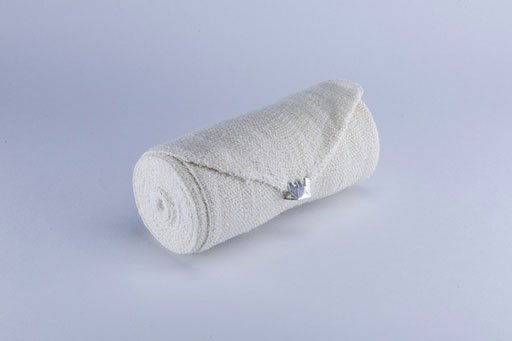
Regardless, gauze should also only be used in very particular situations where such a demand is worth the potential inconvenience of using any other method–or even potentially no method at all. Specifically, gauze is only truly a suitable substitute if you 1) have literally no other alternative–which is technically never the case, 2) have an abundance of gauze in general, and 3) are away from stable shelter for an extended period of time. In this situation, which is not inconceivable even for well-prepared parties, using gauze is acceptable as it is necessary–but the genuine infrequency of this event cannot be stressed enough.
Conclusion
Though it is a dirty business, it is important to make sure that you know what to do in even the most mundane and private moments before a survival situation strikes. Making sure that you keep your hygiene up will help protect you from disease and make your living experience all-around better. We considered different settings, resources, and scenarios, and provided you with the 10 best alternatives to toilet paper for survival situations–keeping in mind that there was a bit of a focus on historical efficacy and less of an attempt to appeal to contemporary social sensibilities. Regardless, with this list, you will be prepared in virtually any setting to ensure that your hygiene does present a risk to survival from within.

